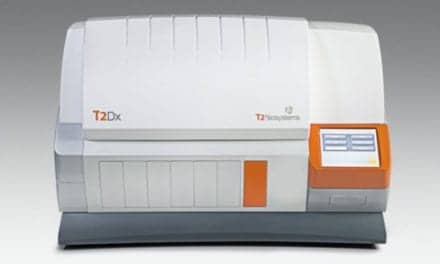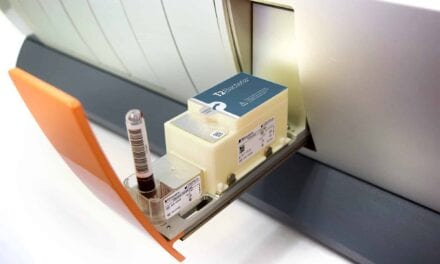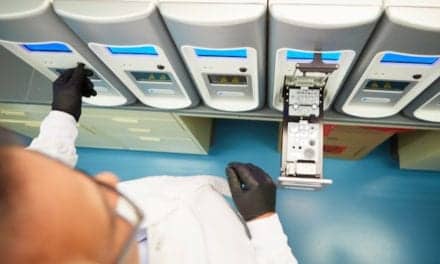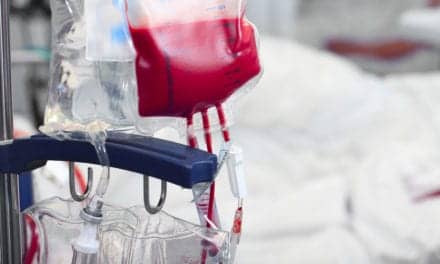Summary:
Researchers propose developing tiny chemical sensors that detect bacteria-associated odors (VOCs) in bodily fluids—similar to breathalyzers—to rapidly diagnose infections and identify antimicrobial-resistant strains, offering a faster and more accessible alternative to traditional lab testing.
Takeaways:
- Smell-Based Diagnostics: The technology mimics how doctors once used smell to diagnose infections, using sensors to detect bacteria-specific VOCs in fluids like blood, urine, and sputum.
- Antibiotic Resistance Detection: Because VOC patterns vary even within bacterial species, these sensors could help identify antimicrobial-resistant strains, aiding targeted treatment.
- Machine Learning Integration: Advanced materials and machine learning will be key to designing sensitive, selective sensors capable of distinguishing bacterial VOCs from human- or environmental compounds.
Tiny sensors, similar to breathalyzers, could “sniff out” bacterial infections and detect antimicrobial-resistant bacteria in bodily fluids, says a team of engineers, microbiologists, and machine learning experts in an opinion paper in the Cell Press journal Cell Biomaterials. Developing this technology could provide affordable and rapid diagnostic tests, which would improve treatment plans and help combat antibiotic resistance.
“One of the biggest drivers of antimicrobial resistance is that we lack rapid diagnostics,” says senior author Andreas Güntner, a mechanical and process engineer at ETH Zurich, who led the project alongside Catherine Jutzeler, Thomas Kessler, Emma Slack, and Adrian Egli. “Our idea is to bypass laboratory analysis, which is multi-step process that usually takes hours to days—and sometimes even weeks—with a simple test that gives results within seconds to minutes.”
Historically Doctors Used Their Noses to Diagnose Bacterial Infections
Historically, doctors used their noses to diagnose bacterial infections. For example, Pseudomonas aeruginosa infections exude a sweet, grape-like scent, whereas Clostridium infections have a foul, putrid smell. These odors are due to the presence of volatile organic compounds (VOCs), tiny molecules emitted by microbes and other organisms that often carry distinctive smells.
Instead of using our noses, the researchers propose developing chemical sensors to detect bacteria-associated VOCs in bodily fluids such as blood, urine, feces, and sputum (phlegm). Similar technologies are used to detect specific molecules in alcohol breathalyzers and air-quality monitoring devices.
“We have already developed and commercialized something similar for detecting contaminations like methanol in alcoholic beverages,” says Güntner. “Now, we are trying to transfer this technology to more complex situations.”
VOCs Differ Among the Same Bacteria Species
Even within the same species, different strains of bacteria can emit different combinations or concentrations of VOCs. The authors note that because of this, the sensors could be used to identify infections caused by antimicrobial-resistant bacteria. This concept has already been demonstrated in the lab—a previous study showed that VOC signatures can differentiate methicillin-resistant Staphylococcus aureus (MRSA) from non-resistant strains. However, developing sensors for use in clinical practice will require more research.
As the VOC concentrations emitted by bacteria are extremely low, the development of suitable sensors is challenging. “Imagine you have a room full of 1 billion tiny balls, and all of them are blue except for one red ball,” says Güntner. “To differentiate between different bacteria types, you must be able to recognize and distinguish that situation within seconds from a situation where 3 or 4 red balls are present.”
Sensors Could Use Various Materials
Because bacteria emit thousands of different VOCs, the devices will need to include a combination of sensors with different binding capacities. These sensors could be made using materials including metal oxides, polymers, graphene derivatives, and carbon nanotubules and would be designed using recent advances in nano- and molecular-scale engineering. To streamline detection, the devices would also need to be equipped with filters to remove compounds that are uninformative (e.g., VOCs that are produced by human cells, not bacteria, or that are produced by all bacteria).
The researchers say that machine learning algorithms will play a vital role in guiding the sensor design. “Machine learning will be essential for identifying the smallest combinations of VOCs that can distinguish different types of bacteria and give information on antimicrobial resistance and virulence,” says Güntner.
Once developed, the sensors would offer a rapid, transportable method for diagnosing bacterial infections that could be used without significant training.
“The overall goal is to translate scientific advances in VOC analysis into practical, reliable tools that can be used in everyday medical practice,” says Güntner. “Ultimately, we hope this will improve patient outcomes and support antibiotic stewardship.”
Featured Image: Yuliya Rudzko | Dreamstime.com





